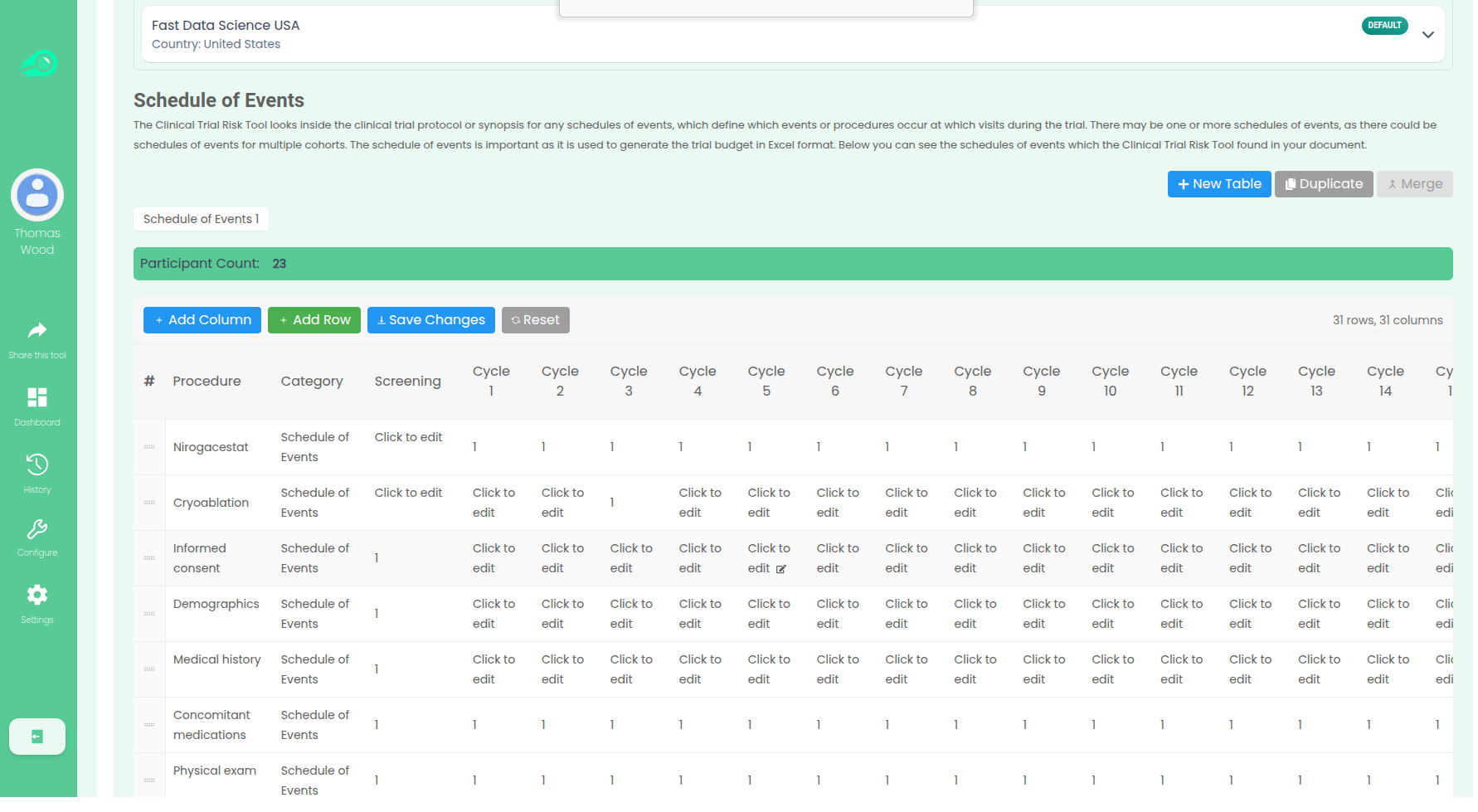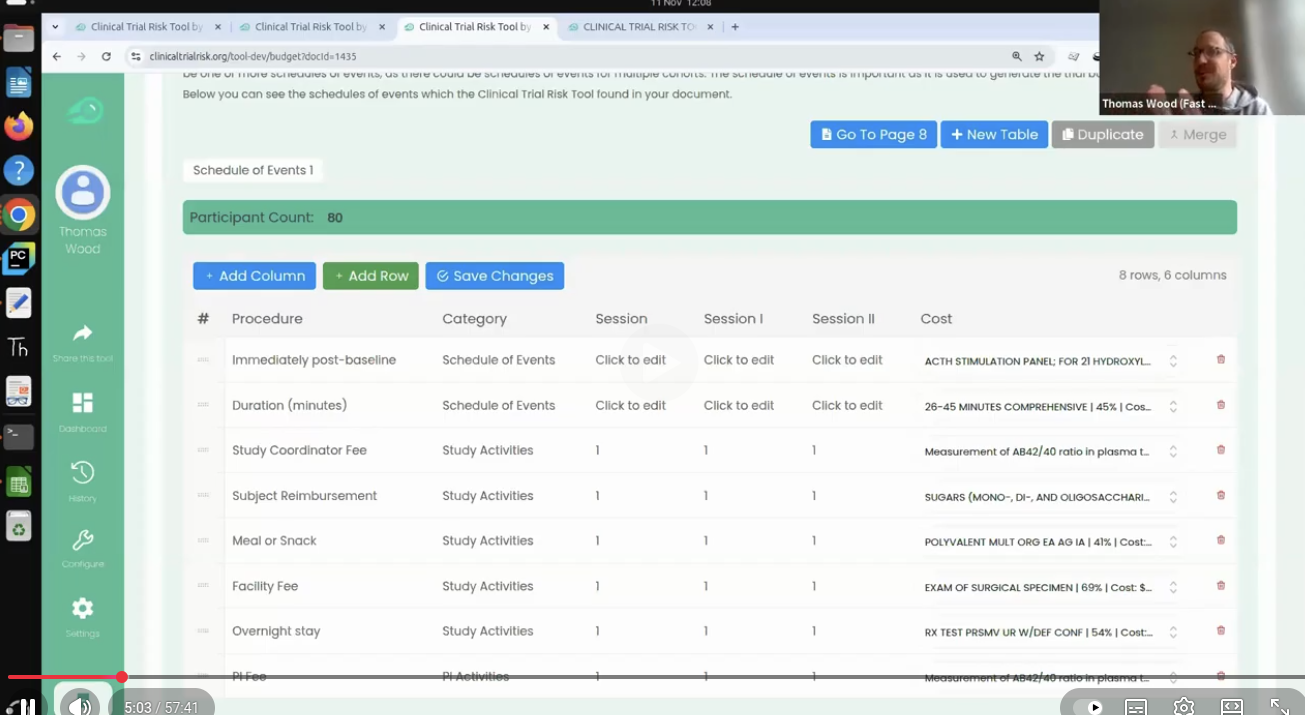
How can you use the Clinical Trial Risk Tool to create a per-subject budget from a protocol or synopsis and a site Charge Master? The video below walks you through how the Clinical Trial Risk Tool by Fast Data Science can accelerate your budgeting.
The Clinical Trial Risk Tool streamlines the creation of a per-subject budget by automating the typically manual process of extracting data from the Study Protocol and cross-referencing it with Charge Master/Fee Schedules.
The tool focuses on the Schedule of Events table within the study protocol. This table is critical because it lists every procedure and assessment (Y-axis) and specifies the visit (X-axis) at which each will take place (often marked with an “X”). The tool pulls out this table data from the PDF protocol, overcoming the need for manual transcription.
Once the procedures and the relevant visits are identified, the tool uses the Charge Master/Schedule of Procedure Fees which the user has selected. The Charge Master contains the local codes and costs for various procedures. The tool cross-references the procedures identified in the Schedule of Events with their associated costs in the Charge Master, using generative AI (vector similarity).
By matching the required study procedures with their local costs, the tool can fill out an itemised budget (e.g., cost of vital signs, lab procedures, blood draws, etc.) for each patient visit, ultimately compiling the total per-subject budget.
You can also check out our recent White Paper.
How does the tool work? https://clinicaltrialrisk.org/clinical-trial-protocol-software/create-clinical-trial-budget-from-synopsis/
More about Fast Data Science: https://fastdatascience.com/

Thomas Wood presents the Clinical Trial Risk Tool at the Clinical AI Interest Group at Alan Turing Institute The Clinical AI Interest group is a community of health professionals from a broad range of backgrounds with an interest in Clinical AI, organised by the Alan Turing Institute. In the group’s November 2025 meeting, the talk was given by Dr Jeff Hogg, Programme Director, MSc AI Implementation (Healthcare), University of Birmingham and Clinical Innovation Officer in AI, University Hospitals Birmingham NHSFT, titled AI Readiness for Health and Care Provider Organisations.

Guest post by Safeer Khan, Lecturer at Department of Pharmaceutical Sciences, Government College University, Lahore, Pakistan Multi-Arm & Multi-Stage (MAMS) Clinical Trials Design Tips The design of clinical trials is increasingly challenged by the Rising Costs, limited availability of eligible patient populations, and the growing demand for timely therapeutic evaluation. Traditional parallel-group designs, which typically compare a single intervention to a control, are often insufficient to meet these pressures in terms of speed, efficiency, and resource utilization.

You can use the t-test when you want to compare the means (averages) of continuous data between two groups, such as blood pressure or maximum concentration of a drug in urine (Cmax). If you have data with a dichotomous outcome, you can use the Chi-Squared test instead - please try our Chi-Squared sample size calculator. The calculator below will calculate the minimum sample size for you. Your expected effect size d is the standardised effect size according to Cohen’s definition.